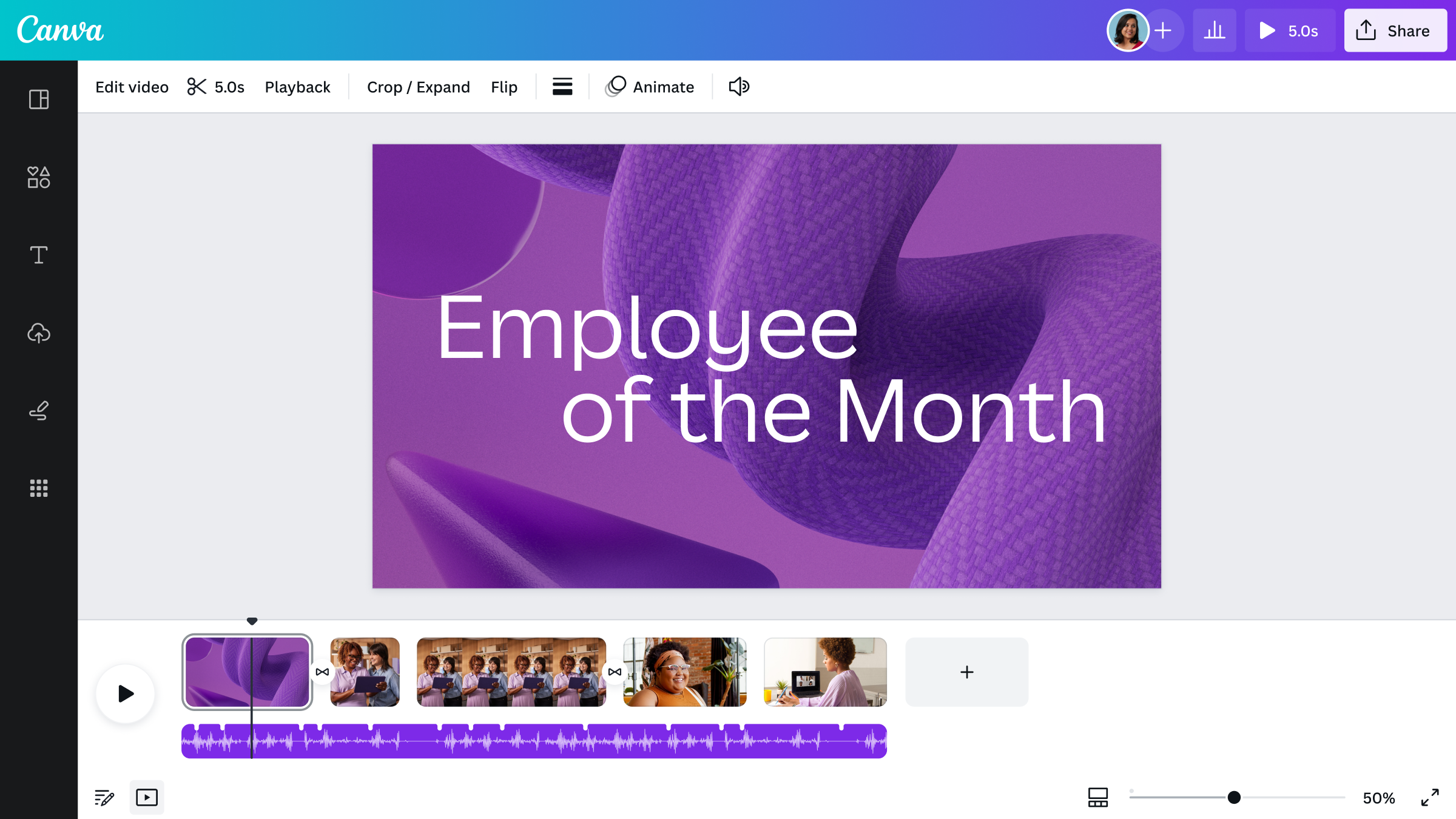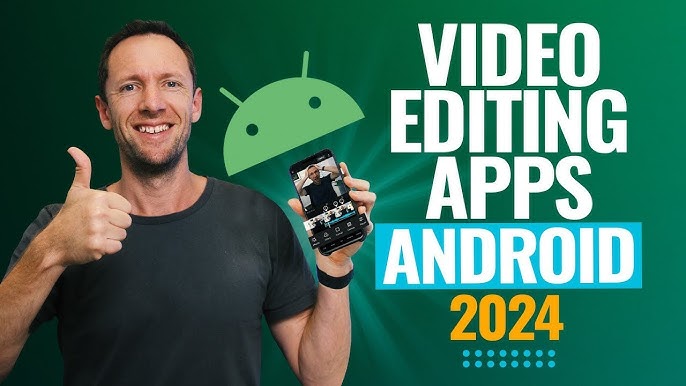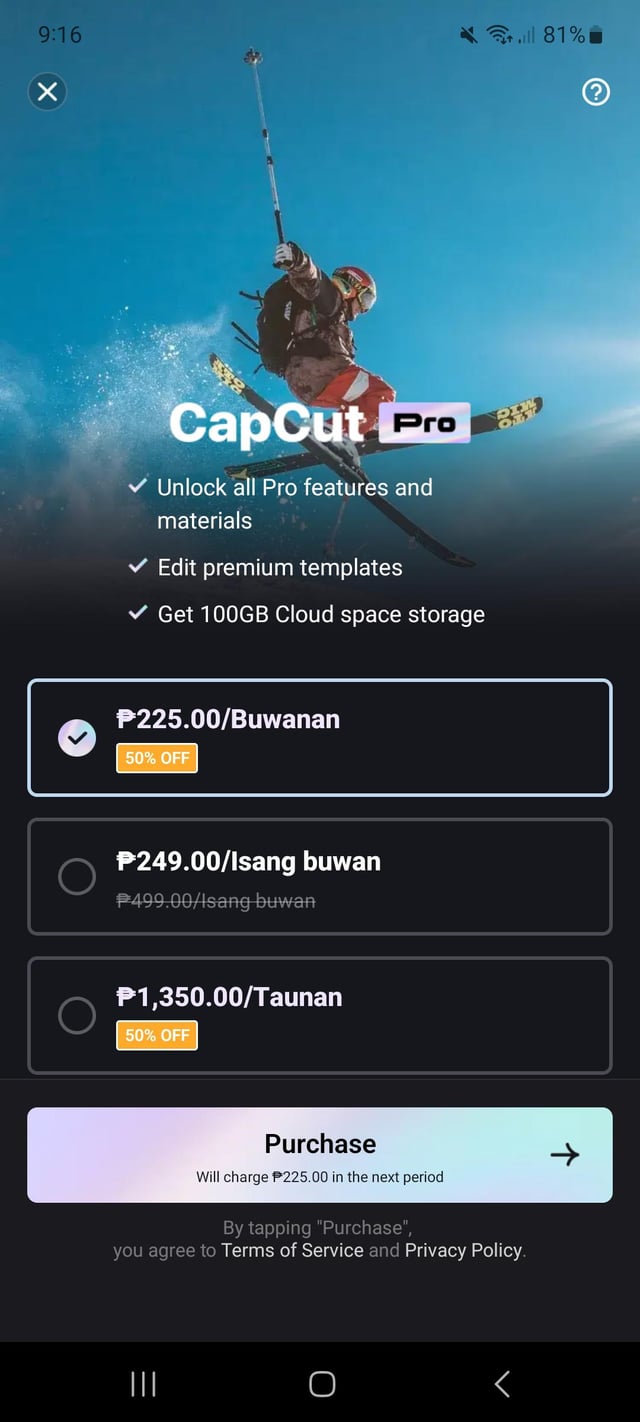Video editing software is essential for creating engaging visual content. These tools help transform raw footage into polished videos.
In today’s digital age, video content is everywhere. Social media, marketing, and personal projects all rely on captivating videos. But what makes a video stand out? It’s the editing. Good software can turn amateur clips into professional masterpieces. It offers features like trimming, color correction, and special effects.
Whether you’re a beginner or a pro, the right tool can make a big difference. Selecting the best video editing software depends on your needs and skill level. Some tools are simple and user-friendly. Others offer advanced options for experienced editors. This guide will explore various software options to help you find the perfect fit.
Also Read
- Crystalsound Lifetime Deal: Unlock Unlimited Audio Editing
- Publitio Lifetime Deal: Unlock Unlimited Media Storage & Delivery
- Adilo Lifetime Deal: Unlock Unlimited Video Hosting Today

Credit: www.canva.com
Popular Video Editing Tools
Video editing software has become essential for anyone creating visual content. From YouTubers to professional filmmakers, everyone needs reliable video editing tools. With so many options available, it can be challenging to choose the right one. This post will help you navigate through the most popular video editing tools available today.
Top Free Options
Free video editing software is perfect for beginners and those on a budget. These tools often offer basic features that are ideal for simple editing tasks.
Here are some of the best free video editors available:
- HitFilm Express: This is a powerful, free video editing application. It offers many advanced video editing programs and tools. Users can access professional video editing features without spending a dime.
- DaVinci Resolve: Known for its color correction tools, this software is a favorite among video production professionals. It offers robust video editing features in a free version.
- Lightworks: This free video editor is suitable for both beginners and advanced users. It provides a range of video editing tools and supports multiple formats.
- iMovie: Available for Mac users, iMovie is an easy-to-use video editing application. It is perfect for video editing for beginners with its simple interface and basic editing tools.
Below is a table summarizing the features of these free video editors:
| Software | Key Features | Suitable For |
|---|---|---|
| HitFilm Express | Advanced tools, VFX, 2D and 3D compositing | Intermediate to advanced users |
| DaVinci Resolve | Color correction, audio post-production | Professionals |
| Lightworks | Multicam editing, wide format support | All levels |
| iMovie | Simple interface, trailer templates | Beginners |
Best Paid Software
Paid video editing software often includes more advanced features. These are suitable for professional video editing and complex projects. Here are some of the best video editing software options that require a purchase:
- Adobe Premiere Pro: This is a widely used video editing tool in the film industry. Adobe Premiere Pro offers comprehensive video editing features, including advanced color grading, motion graphics, and multi-camera editing.
- Final Cut Pro X: Exclusive to Mac users, this software is known for its powerful tools and intuitive interface. It is ideal for professional video editing and offers advanced video editing programs.
- CyberLink PowerDirector: This is an excellent choice for both beginners and advanced users. It provides a wide range of video production software tools, including 360-degree video editing, motion tracking, and more.
- Corel VideoStudio: This is a user-friendly video editing application that offers many features. It includes multi-camera editing, motion tracking, and other advanced tools suitable for both novices and professionals.
Below is a table summarizing the features of these paid video editors:
| Software | Key Features | Suitable For |
|---|---|---|
| Adobe Premiere Pro | Advanced color grading, motion graphics | Professionals |
| Final Cut Pro X | Intuitive interface, powerful tools | Mac users, professionals |
| CyberLink PowerDirector | 360-degree editing, motion tracking | All levels |
| Corel VideoStudio | Multi-camera editing, user-friendly | Beginners to advanced users |
Key Features To Look For
Video editing software has become essential for content creators, filmmakers, and hobbyists. Choosing the right software can be overwhelming due to the numerous options available. Understanding the key features to look for can help you make an informed decision and find the best fit for your needs.
Editing Capabilities
The editing capabilities of video editing software are crucial. A good program should offer a range of tools that cater to both beginners and professionals. Here are some important editing capabilities to consider:
- Non-Linear Editing: This allows you to access any frame in a digital video clip regardless of the sequence in the clip.
- Timeline Editing: A feature that helps in organizing and manipulating video clips over a timeline for precise editing.
- Video Effects: Look for software that offers a variety of effects, such as filters, transitions, and motion graphics.
- Audio Editing Capabilities: Good software should allow you to edit audio tracks, add background music, and synchronize audio with video.
- Multi-track Editing: This feature is essential for complex projects, allowing you to work on multiple video and audio tracks simultaneously.
Professional video editing software often includes advanced tools like chroma key (green screen), color correction, and motion tracking. These tools are vital for high-quality video production. Whether you are working on a simple vlog or a feature film, robust editing capabilities can significantly enhance your project.
User Interface
A user-friendly interface is vital for an efficient video editing process. The interface should be intuitive and easy to navigate, especially for beginners. Here are some aspects to consider:
- Layout: The software should have a clean and organized layout, making it easy to find and use different tools.
- Drag-and-Drop Functionality: This feature simplifies the editing process by allowing you to easily move video clips, audio files, and effects.
- Customizable Workspaces: Look for software that lets you customize your workspace to suit your workflow preferences.
- Tooltips and Guides: Built-in tooltips and guides can help new users understand the functions of different tools and features.
- Responsive Performance: The software should be responsive and quick, ensuring smooth video editing without lag.
Many video editing applications offer tutorials and support resources, which can be very helpful for beginners. A well-designed user interface can make the difference between a frustrating editing experience and a smooth, enjoyable one. Investing time in finding user-friendly editing software will pay off in the long run.
Platforms And Compatibility
Choosing the right video editing software depends on the platform you are using and its compatibility with your device. Whether you are working on a Windows PC, a Mac, or a mobile device, the software should offer the features you need for a seamless editing experience. Understanding the differences in platforms and their compatibility can help you select the Best Video Editing Software for your needs.
Windows Vs Mac
When selecting Video Editing Programs, the operating system plays a crucial role. Windows and Mac each offer unique advantages for video editing.
Windows Video Editing Software often provides a wide range of options, from Free Video Editing Software to Professional Video Editing Software. Some popular choices include:
- Adobe Premiere Pro – A favorite among professionals, offering comprehensive Video Editing Tools.
- DaVinci Resolve – Known for its powerful color grading capabilities and available in a free version.
- HitFilm Express – A free option that combines editing and visual effects.
Mac Video Editors are also highly regarded, especially for their integration with other Apple products and services. Notable options include:
- Final Cut Pro – A high-end tool favored by professionals for its speed and advanced features.
- iMovie – A user-friendly option that is free and perfect for beginners.
- Adobe Premiere Pro – Also available on Mac, offering the same professional-grade features as on Windows.
The table below summarizes some key differences:
| Feature | Windows | Mac |
|---|---|---|
| Software Variety | High | Medium |
| Integration | Limited | Excellent with Apple ecosystem |
| Free Options | Many | iMovie |
| Professional Options | Adobe Premiere Pro, DaVinci Resolve | Final Cut Pro, Adobe Premiere Pro |
Mobile Editing Apps
For on-the-go editing, Mobile Video Editing Apps provide a convenient solution. These apps allow you to create and edit videos directly from your smartphone or tablet.
Popular Mobile Video Editing Applications include:
- Adobe Premiere Rush – A simplified version of Adobe Premiere Pro, designed for mobile use.
- KineMaster – Offers a wide range of Video Editing Features and is available for both Android and iOS.
- iMovie – Available on iOS, bringing the familiar Mac Video Editors experience to mobile devices.
- InShot – Easy to use, with powerful tools for editing and adding effects.
Mobile editing apps provide several benefits:
- Portability – Edit videos anywhere, anytime.
- Ease of Use – User-friendly interfaces suitable for beginners.
- Quick Sharing – Easily share your videos on social media platforms.
Although mobile apps may lack some advanced features found in desktop Video Editing Programs, they are perfect for quick edits and social media content. Whether you need a simple cut or advanced effects, these Video Editing Applications can handle your needs on the go.

Credit: www.captions.ai
Learning Resources
Video editing software is essential for creating engaging content, whether for personal projects or professional work. To make the most out of these tools, learning resources are crucial. They help users understand the features and techniques needed to produce high-quality videos. This section explores various learning resources available for both beginners and professionals in video editing.
Online Tutorials
Online tutorials are one of the most accessible learning resources for video editing. They offer step-by-step guides on using various video editing software, such as Adobe Premiere Pro, Final Cut Pro, and DaVinci Resolve.
- Video Editing Techniques: Many tutorials focus on specific techniques like color grading, transitions, and effects.
- Video Editing For Beginners: Beginners can find tutorials that cover the basics of video editing, helping them understand the interface and basic functions.
- Professional Video Editing: Advanced users can learn complex techniques to enhance their editing skills.
Here are some popular platforms offering quality online tutorials:
| Platform | Features |
|---|---|
| Udemy | Comprehensive courses on various video editing applications |
| YouTube | Free tutorials, ranging from beginner to advanced levels |
| LinkedIn Learning | Professional courses with certifications |
Online tutorials are a great way to learn at your own pace. They allow you to pause, rewind, and practice alongside the video. This flexibility makes them ideal for users with different levels of experience.
Community Forums
Community forums are another valuable resource for learning video editing. They provide a platform for users to ask questions, share tips, and discuss various video editing tools and techniques.
Some popular community forums include:
- Reddit: Subreddits like r/VideoEditing and r/Filmmakers are great places to seek advice and share experiences.
- Creative COW: A professional forum for video editors, offering tutorials, tips, and a platform for discussions.
- Video Editing Software Forums: Many video editing software providers have official forums where users can get support and share knowledge.
Community forums offer several benefits:
- Real-Time Support: Users can get answers to their questions quickly.
- Networking Opportunities: Connect with other video editors, both beginners and professionals.
- Learning from Others: Gain insights from the experiences of other users.
Community forums are particularly useful for solving specific problems and learning new Video Editing Techniques. They are a great supplement to online tutorials, providing a more interactive learning experience.
Editing Techniques
Video editing software has made creating engaging videos easier than ever. The right tools enable users to bring their vision to life. Understanding various editing techniques can help enhance the quality and flow of your videos. Let’s dive into some key editing techniques that can elevate your video projects.
Cutting And Trimming
Cutting and trimming are fundamental techniques in video editing. They help in removing unwanted sections and refining the overall structure of your videos. With digital video software, you can precisely cut and trim clips to create a seamless narrative.
Here are some key points about cutting and trimming:
- Cutting: This involves splitting a video clip into two or more parts. It allows for the removal of unnecessary segments.
- Trimming: This reduces the length of a video clip by adjusting its start or end points. It helps in focusing on the most important parts.
Most video production software comes with easy-to-use cutting and trimming tools. Here’s a simple process to follow:
- Import your video footage into the video editing application.
- Select the clip you want to edit.
- Use the cutting tool to split the clip at the desired points.
- Trim the unnecessary sections using the trimming tool.
- Preview the edited clip to ensure smooth transitions.
By mastering these basic techniques, you can greatly improve the clarity and impact of your videos.
Transitions And Effects
Transitions and effects add a professional touch to your videos. They help in creating smooth changes between scenes and enhancing the visual appeal. Most video editing tools offer a wide range of transitions and effects.
Common types of transitions include:
- Cut: A simple transition where one clip immediately follows another.
- Fade: Gradually transitions from one clip to another, creating a smooth effect.
- Dissolve: Blends one clip into another, often used to show a passage of time.
- Wipe: One clip is replaced by another through a sliding motion.
Video enhancement tools also offer various effects such as:
- Filters: Change the color and tone of the video, adding mood and style.
- Text and Titles: Add informative or decorative text to your videos.
- Animations: Introduce motion elements to make your videos more dynamic.
Here’s a simple table summarizing some popular transitions and effects:
| Transition | Description |
|---|---|
| Cut | Direct switch from one clip to another |
| Fade | Gradual transition between clips |
| Dissolve | Blending of two clips |
| Wipe | Sliding motion transition |
Using transitions and effects wisely can make your videos more engaging. These video editing features are essential for creating polished and professional-looking videos.
Common Mistakes To Avoid
Video editing software helps create engaging content. But, common mistakes can ruin a project. Avoid these errors to improve your work and save time. Let’s explore these common pitfalls.
Overediting
Overediting is a frequent mistake in video post-production. It involves using too many effects, transitions, or edits. This can make the video look cluttered and unprofessional. Here are some points to consider:
- Excessive Video Effects: Adding too many effects can distract viewers. Use effects sparingly and ensure they add value.
- Too Many Transitions: Stick to simple transitions. Avoid using too many different types of video transitions.
- Unnecessary Cuts: Frequent cuts can confuse the audience. Make cuts only when needed to maintain flow.
Balance is key. Focus on the story and message. Use video editing tools wisely to enhance, not overwhelm.
Here’s a table to illustrate the dos and don’ts:
| Dos | Don’ts |
|---|---|
| Use consistent transitions | Use too many different transitions |
| Apply effects to add value | Add effects for no reason |
| Make cuts to improve flow | Make unnecessary cuts |
Ignoring Audio
Ignoring audio is another common mistake. Good audio is as important as visuals. Neglecting this can make a video less engaging. Consider these points:
- Poor Audio Quality: Bad audio can ruin the viewer’s experience. Use quality microphones and audio editing software to enhance sound.
- Inconsistent Volume Levels: Maintain consistent volume levels throughout the video. Sudden changes can be jarring.
- Ignoring Background Noise: Remove background noise during editing. It can distract from the main content.
Here’s a table to help you remember:
| Best Practices | Common Mistakes |
|---|---|
| Use quality microphones | Rely on built-in camera audio |
| Edit background noise | Ignore background noise |
| Maintain volume levels | Allow volume to fluctuate |
Good audio enhances the overall quality. Use audio editing software to fine-tune sound. Pay attention to details to ensure a professional result.
Future Trends In Video Editing
Video editing software has seen significant advancements in recent years. As technology progresses, new trends emerge, shaping the future of video editing. These trends make video editing more accessible, efficient, and creative. Let’s explore two major future trends in video editing.
Ai And Automation
AI and automation are transforming video editing. These technologies bring numerous benefits to video editing applications. AI video editing tools can analyze footage and make intelligent edits. For example:
- Scene detection
- Object recognition
- Auto-cropping
- Color correction
These features save time and effort. AI can also suggest edits based on the content. This is particularly useful for video editing for beginners. They can rely on AI to guide them through the process. Professional video editing also benefits from AI. It speeds up workflows and enhances creativity.
Automation in video editing platforms includes:
- Batch processing
- Template-based editing
- Auto-transitions
- Audio synchronization
These automated features ensure consistency and efficiency. They are especially helpful for large projects. AI and automation are shaping the best video editing software to be smarter and more user-friendly.
Cloud-based Solutions
Cloud-based solutions are becoming more popular in video editing. These solutions offer many advantages. Cloud video editing solutions allow users to access projects from anywhere. This is ideal for remote work and collaboration.
Some benefits of cloud-based video editing tools include:
- Remote access
- Collaborative editing
- Automatic backups
- Scalability
Online video editing platforms often come with robust security features. This ensures that your projects are safe. Cloud-based solutions also provide flexibility. Users can edit videos on different devices. This includes laptops, tablets, and smartphones.
A table comparing traditional and cloud-based video editing might look like this:
| Feature | Traditional Video Editing | Cloud-based Video Editing |
|---|---|---|
| Accessibility | Limited to specific devices | Accessible from anywhere |
| Collaboration | Difficult | Easy and real-time |
| Storage | Local | Cloud-based |
Cloud-based video editing platforms are evolving. They offer more advanced video editing features. This includes real-time collaboration and high-speed rendering. These platforms are great for both video editing for beginners and professionals. Cloud-based solutions represent the future of video editing.

Credit: www.pcmag.com
Case Studies
Video editing software has transformed the way we create and share visual stories. From simple home videos to professional film productions, these tools have become essential for anyone involved in video creation. Case studies provide concrete examples of how video editing software has been used to achieve remarkable results.
Successful Projects
Many successful projects owe their polished finish to the best video editing software available. For instance, the short film “Echoes of Time” was created using a combination of professional video editing software and innovative video editing techniques. The director highlighted the use of creative video editing solutions to bring the narrative to life. Key tools included:
- A user-friendly video editor for seamless transitions
- Advanced color correction features
- Audio enhancement capabilities
Another notable project is the documentary “Nature’s Whisper.” The film’s production team utilized affordable video editing software that offered robust features without breaking the bank. Their process included:
- Importing raw footage into the video production software
- Organizing clips using video editing tools
- Applying special effects and filters
- Exporting the final product in high definition
This project demonstrated that even with a limited budget, high-quality results are achievable with the right film editing software. The software’s ability to handle extensive footage and deliver a polished finish was crucial to the project’s success.
Innovative Filmmakers
Innovative filmmakers often push the boundaries of what’s possible with video editing apps. One such filmmaker, Jane Doe, used video editing techniques to create a visually stunning music video. Her approach included:
- Layering multiple clips for a dynamic effect
- Using motion graphics to enhance storytelling
- Incorporating 3D elements with video editing tools
Jane’s work showcases the power of professional video editing software to transform raw footage into an engaging visual experience. Her ability to utilize the software’s full potential sets her apart in the industry.
Another example is filmmaker John Smith, known for his unique approach to video editing. John uses film editing software to experiment with non-linear storytelling. His process includes:
| Technique | Software Feature |
|---|---|
| Scene Intercutting | Multiple Track Editing |
| Flashbacks | Timeline Control |
| Visual Effects | Integrated VFX Tools |
John’s innovative use of video editing software has earned him numerous awards. His commitment to exploring new techniques and tools demonstrates the evolving nature of the industry.
Frequently Asked Questions
What Is The Best Video Editing Software?
The best video editing software depends on your needs. Popular choices include Adobe Premiere Pro, Final Cut Pro, and DaVinci Resolve. Each offers unique features suitable for different skill levels.
Is Video Editing Software Expensive?
Video editing software varies in price. Free options like HitFilm Express and Lightworks are available. Premium software like Adobe Premiere Pro offers advanced features at a higher cost.
Can Beginners Use Video Editing Software?
Yes, beginners can use video editing software. Many programs offer user-friendly interfaces and tutorials. Software like iMovie and Filmora is ideal for beginners.
What Are The Key Features To Look For?
Key features include multi-track editing, transitions, effects, and audio control. Look for software with a user-friendly interface and good customer support.
Conclusion
Choosing the right video editing software can be a game-changer. Focus on ease of use and features that suit your needs. Beginners might prefer simpler tools, while professionals might opt for advanced software. Always consider your budget and the software’s learning curve.
Test a few options to find the best fit. Happy editing!








